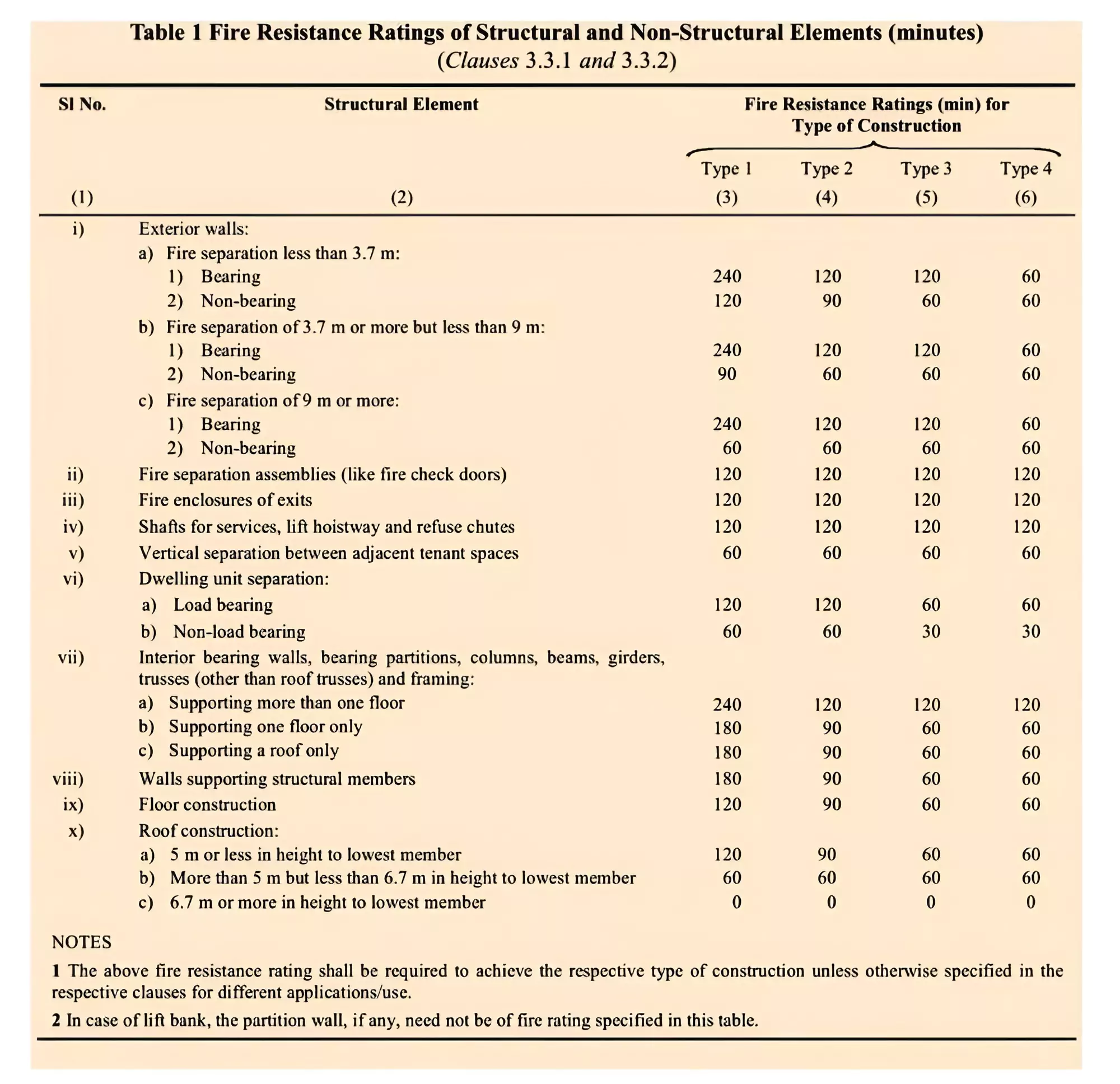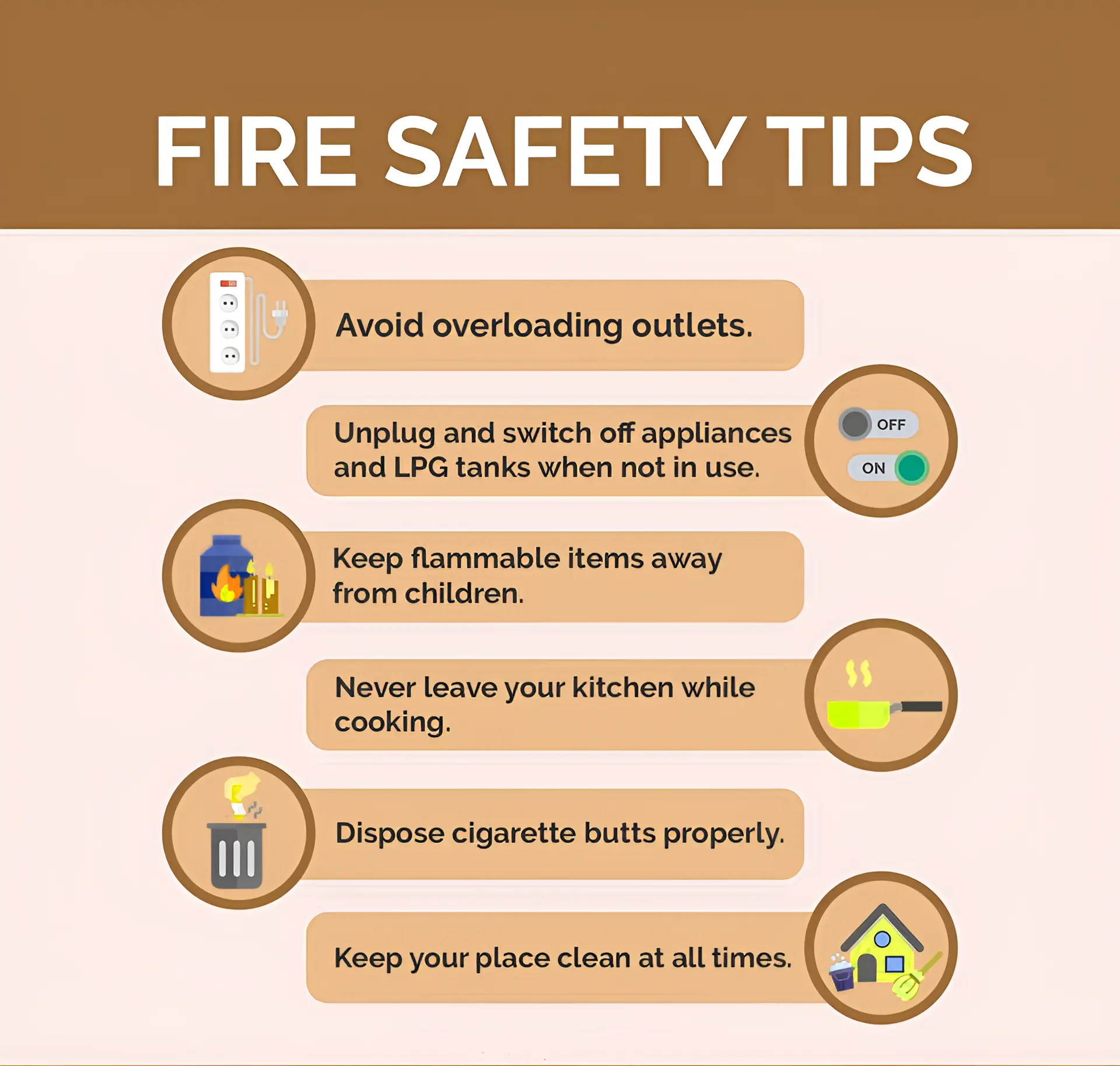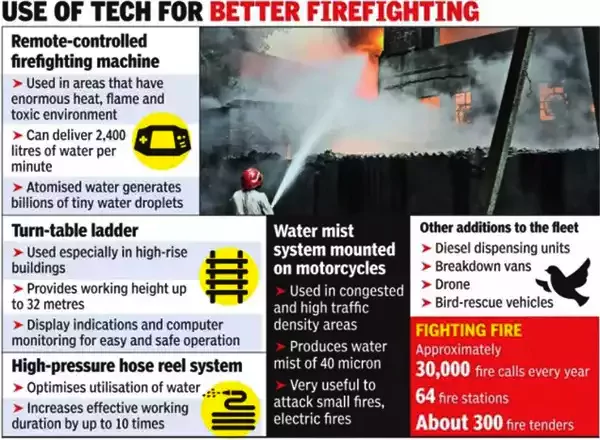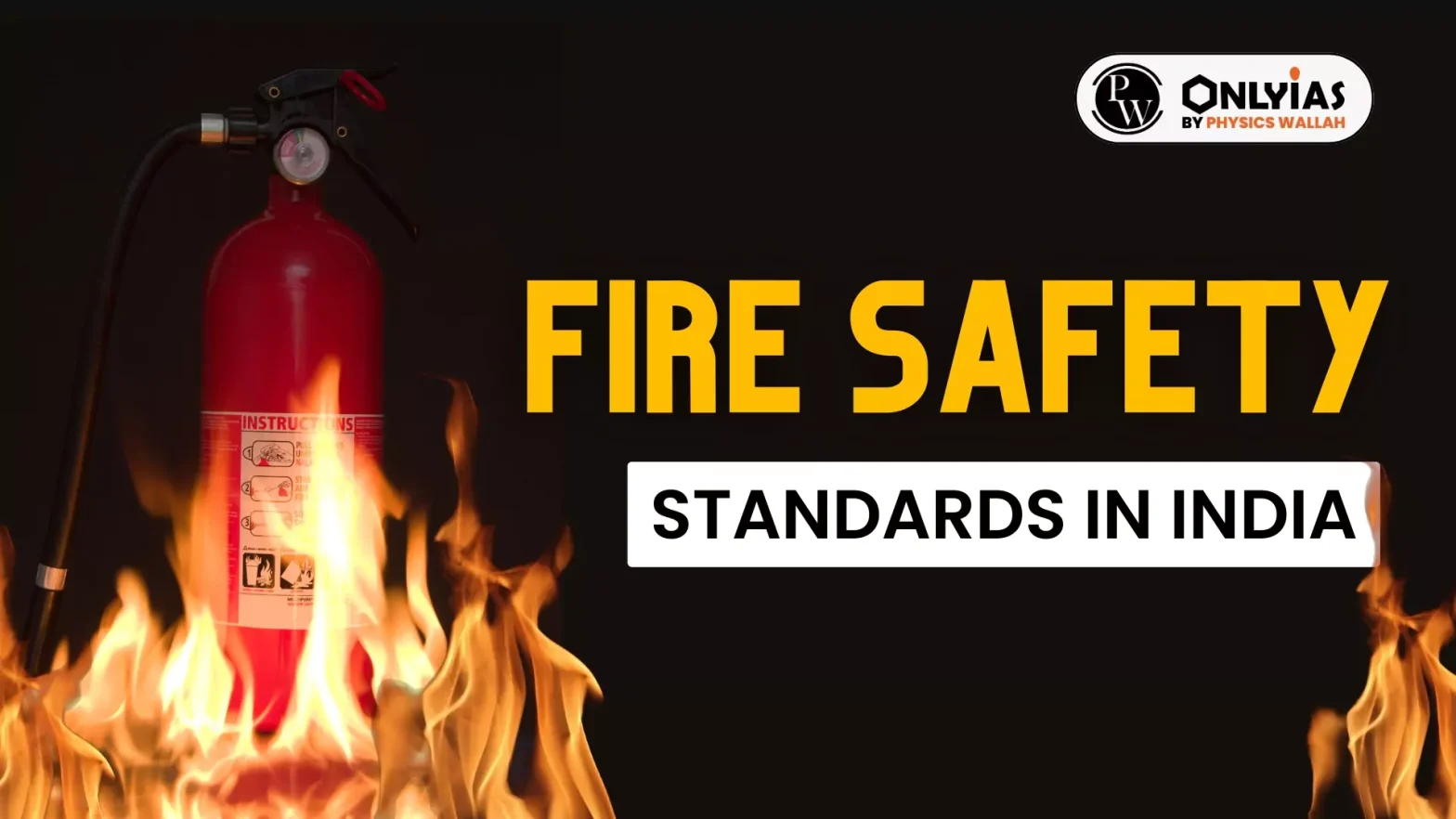Context
The recent tragic events at a children’s hospital in Delhi and a gaming zone in Rajkot, Gujarat brought into focus the state of safety standards nationwide and the urgent need for robust enforcement measures to avert such tragedies.

Tragic Fires in Delhi Hospital and Rajkot Gaming Zone
- Case of Delhi: In East Delhi’s children’s hospital, a fire broke out, tragically claiming the lives of seven newborns.
- While the cause of the fire remains unconfirmed, locals have raised concerns about “illegal refilling of cylinders on the first floor of the hospital building.”
- Case of Rajkot: Here, the fire at the gaming zone was attributed to an electrical short circuit. The indoor gaming facility, housed within a steel-fabricated shed spanning three storeys, resulted in the deaths of 27 people.
- National Fire Service Day: 14th April is dedicated to Fire Safety in India and is celebrated as National Fire Service Day.
Enroll now for UPSC Online Course
Major Notable Fire Incidents in India:
- Uphaar Cinema blaze in Delhi, 1997
- Kumbakonam School Fire in Tamil Nadu, 2004
- The Mumbai Kamala Mills Fire, 2017
- Fire in a Surat Coaching Centre, 2019
- Ahmednagar Hospital Fire Tragedy, 2021
|
Alarming Fire Incidents in India
- National Crime Records Bureau (NCRB): As per recent data by the NCRB, over the past two years, 3,375 fire incidents were reported in India, with electrical short circuits being a predominant cause.
- Shockingly, commercial building fires claimed 330 lives in 2019 alone, while residential fires led to 6,329 fatalities nationwide.
- Around 83,872 fire incidents were recorded in India during 2014–2018, according to the Ministry of Home Affairs, Department of States, NCRB.
- Accidental Deaths and Suicides in India (ADSI): As per data from the ADSI, with an average of 35 fire-related deaths occurring daily between 2016 and 2020. The number of people dying in the incidents was 16,900 in 2016 and 9,110 in 2020.
About National Disaster Management Authority (NDMA):
- Origin: Disaster Management Act of 2005 established NDMA in 2006, as a statutory body for disaster management in India
- Composition: Its chairman is the Prime Minister, and there are nine other members. Vice-Chairperson duties are assigned to one of the nine participants.
- Objectives:
-
- To pioneer and put into practise a comprehensive and integrated approach to disaster management in India.
About Bureau of Indian Standards (BIS):
- BIS is the National Standard Body of India established under the BIS Act 2016 for the harmonious development of the activities of standardization, marking and quality certification of goods.
|
-
- Maharashtra and Gujarat collectively accounted for 30% of fire-related fatalities, with electrical faults, human negligence, and ill-formed habits cited as primary causes.
- Major Causes of Fire Accidents:
-
- Electrical short circuit
- Bursting of stove or gas cylinder
- Human Negligence
- Improper storage and use of flammable items
- Bypassing norms for Fire Safety
About Fire Safety
- Refers: It refers to the guidelines and practices meant to minimize the destruction caused by fire.
- Objective: To prevent the occurrence of a fire incident and control the fire after it ignites to limit the damage.
Fire Safety Norms in India
- Responsibility of State: Fire Service is a State subject and has been included as a Municipal function in the XII Schedule of the Constitution of India under Article 243 (W).
- The Central Government does not maintain any data related to fire accidents/incidents in States centrally.
- National Building Code (NBC): NBC was published by the Bureau of Indian Standards (BIS) in 1970 and updated in 2016, providing comprehensive guidelines for construction, maintenance, and fire safety protocols in buildings.
- Model Building Bye Laws 2016: It issued by the Ministry of Housing and Urban Affairs, offers guidance to states and Union Territories (UTs) in formulating building bylaws to address fire protection and safety requirements.
- National Disaster Management Authority (NDMA): It mandates specific fire safety criteria for public structures like hospitals, encompassing provisions for open safety spaces, evacuation procedures, and dedicated staircases and evacuation drills.
Enroll now for UPSC Online Classes
Follow Specific Codes:
- Specific Essential Measures: Under the framework of the National Building Code (NBC), achieving absolute fire safety may be deemed impracticable, but the Code delineates specific measures essential for fire prevention and mitigation.
- Zoning Regulations governing Building Construction: Residential areas, educational institutions, and other similar establishments are classified under Fire Zone 1, aimed at preventing the juxtaposition of industrial or hazardous structures with residential and commercial buildings.
- These regulations extend to various building types, including high-rises, special-purpose structures like hotels and educational institutes, businesses, storage, and industrial buildings, (with specified dimensions) etc.
- Use of Non-Combustible Materials: Non-combustible materials should be used for the construction of buildings, and the internal walls of staircase enclosures should be of brickwork, reinforced concrete, or any other material of construction with a minimum of a 120 min rating.
- The NBC also advocates for fire-resistant electrical installations, recommending flame-retardant wiring and metal conduit for medium- and low-voltage wiring.
- It also mandates separate shafts for electric distribution cables and wiring, sealed with fire-stop materials, ensuring compartmentalisation of fire hazards.
- It also emphasizes proper earthing for metallic elements like steel structural members.
Initiatives Taken for Fire Safety:
- Scheme for Expansion and Modernization of Fire Services in the States: It was launched by the Indian Government in 2023 from the earmarked allocation of Preparedness and Capacity Building Funding Window under the National Disaster Response Fund (NDRF) for strengthening fire services in the States for the period upto 2025-26.
- Model Bill to Provide for the Maintenance of Fire and Emergency Service for the State: It was circulated by the Centre to facilitate the maintenance of fire and emergency services at the state level.
- Guidelines by National Disaster Management Authority (NDMA): NDMA has released guidelines covering scaling, types of equipment, and training for fire services across the country.
|
Challenges that need to be Tackled for Fire Safety
- Lack of Planning & Poor Implementation: A study by the National Institute of Disaster Management (NIDM) underscores that lack of planning and poor implementation of norms in urban areas is a major reason behind increasing fire risks as it leads to the formation of informal settlements and over-densification.
- Informal Settlements: In several cases, informal settlements, excluded from the purview of building bylaws and planning regulations, are developed without any consideration for fire safety.
- With the increasing urban slum population, this has become a matter of concern, the study reveals.
- Inadequate Enforcement of Safety Norms: Despite the National Building Code (NCB) serving as a ‘recommendatory document’, many of its provisions are frequently overlooked at the local level. Even obligatory certifications often go unheeded.
- Fire safety audits, crucial for ensuring compliance, have been underutilized due to the failure of local bodies to conduct regular checks and enforce compliance. For this, the courts have often pulled up State authorities over their laxity in implementing the fire safety rules.
- Lack in Monitoring & Compliance: Weak inspections and rare follow-up by municipality are one of the major concerns, which are resulting in recurring tragedies.
- A hospital in Delhi is operating with an inadequate and expired license, lacking fire extinguishers and emergency doors, and an indoor gaming centre in Rajkot lacking a no-objection certificate and conducting welding work during business hours.
- Inadequate Infrastructure: A FICCI-Pinkerton study highlights that urban India has less than 40% of the fire stations it needs.
- Polyurethane foam (PUF) used for plastic insulation is highly flammable due to its proximity to electrical wiring that, when heated due to overloading or short circuit, immediately catches fire.
- Also, in most of the cases, there is absence of smoke management and emergency lighting.
- Lack of Emergency Preparedness: Audits show a systemic lack of preparedness, with a significant percentage of healthcare facilities lacking fire safety clearance.
- In 2020, the National Institute of Disaster Management (NIDM), in its report ‘Fires in India: Learning Lessons for Urban Safety (2020)’, highlighted, “The apathy of the authorities in taking any action has clearly indicated that little has been learnt from the previous fire outbreaks.”
- Non-Uniform Safety Legislation: Since, fire services are under state legislation, it leads to inconsistencies in safety standards.
- In various states, fire service norms are in place. However, there is a notable absence of standardization and consistent safety legislation.
Way Forward

- Uniform & Strong Legislation: India needs a uniform and strong fire safety legislation with an effective time to time audit mechanism to reduce such a large number of casualties.
- Strict Adherence to Laws & Regulations: The NIDM report further highlighted the urgent necessity for stringent adherence to guidelines for fire prevention in existing old structures.
- This includes implementing a rigorous schedule for the renewal of licenses and permits, as well as conducting regular monitoring and inspections of installed firefighting equipment by relevant authorities to avert potential tragedies.
- Ensure Proper Compliance: Compliance of the building bylaws and planning norms could have easily avoided such a deadly incident and saved many.
- Building community resilience would also have been helpful in avoiding this disaster.
- The state of preparedness in terms of fire safety should be taken on a serious note.
- Effective Response Plans: Every municipality needs to develop a fire hazard plan in partnership with administration, fire brigade and health department.
 Singapore is the safest country in the world (2019) when it comes to fire risk, according to the FM Global Resilience Index.
Singapore is the safest country in the world (2019) when it comes to fire risk, according to the FM Global Resilience Index.
- Awareness and Advancement: There is a need to educate the public about its safety norms by including a chapter on fire safety in the school curriculum and conducting regular drills that could help children be prepared to handle such incidents.
- Time has come to modernize fire departments with equipment like smoke detectors, fire hose cabinets and automatic sprinkler systems.
- Community-based Fire Risk Management: Communities managing housing and commercial premises need to regularly organize awareness programmes and they should be actively engaged in the identification, analysis, treatment, monitoring, and evaluation of fire risks to reduce their vulnerabilities and enhance their capacity.
- Capacity Building: Efficient communication links should be established between civilian groups in vulnerable areas and city fire brigades. Government needs to invest more in infrastructure to counter such threats.
- Need for a Global Approach: India and all countries around the world need to come together to bring down these fire fatalities.
- The goal of the Decade of Action for Fire Safety is to stabilize and then reduce the forecast level of fire fatalities, injuries, economic cost and environmental impact around the world by 2032 as global population increases.
- In 2024, over 50 countries came together for the first-ever World Fire Congress in Washington DC that was aimed at increasing international collaboration on the growing challenges faced by fire and rescue services across the globe.
Enroll now for UPSC Online Course
![]() 28 May 2024
28 May 2024



 Singapore is the safest country in the world (2019) when it comes to fire risk, according to the FM Global Resilience Index.
Singapore is the safest country in the world (2019) when it comes to fire risk, according to the FM Global Resilience Index.